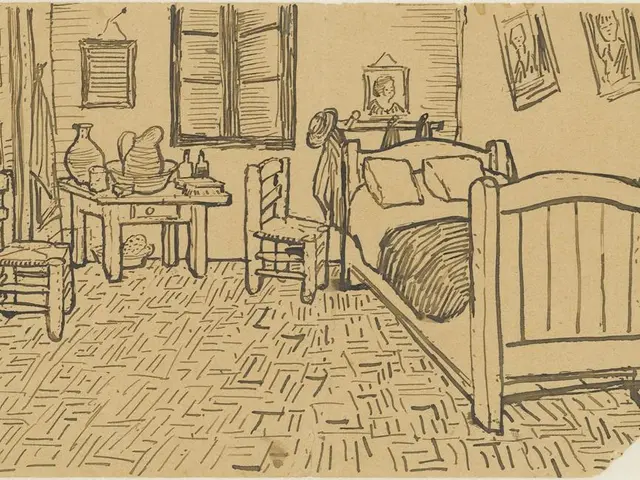Springtime Emblems of Poland: Cherished Storks Signaling Arrival
In Poland, spotting a stork soaring overhead or tending to its grand nest is more than just a glance at nature – it's a sign of renewal, good fortune, and a connection deeply rooted in the country's culture. For centuries, these majestic birds have held a revered place in Polish folklore, remaining an integral part of the rural landscape.
The white stork (Ciconia ciconia), with its striking black-and-white plumage and long, vibrant red legs, is the most famous stork species gracing the skies of Poland. Every year, these remarkable birds undertake extraordinary journeys. As summer wanes across Poland, storks gather in large flocks, readying themselves for their long trek southward. Their wintering grounds lie thousands of kilometers away in the heart of Africa.
This birds' navigational abilities are nothing short of legendary. They employ various cues, including the position of the sun, the Earth's magnetic field, and visual landmarks, to guide themselves on their incredible travels. Young storks, having never made the migration before, instinctively find their way, following older, more experienced birds in the flock.
Springtime in Poland brings an air of excitement as the return of the storks is eagerly awaited. After months of absence, the sight of them restoring their nests and preparing for a breeding season signifies the end of winter's harsh grip and the promise of warmer days ahead. Storks symbolize rebirth and renewal in this time of transformation.
Storks hold a prominent place in Polish culture. Their large nests, often built atop chimneys, barns, or specially constructed platforms, are a common sight in the Polish countryside. Storks are thought to bring good luck and prosperity; nesting near a household is considered a blessing[1]. Legend has it that storks bring babies, symbolizing fertility and new beginnings[2].
Polish folklore is filled with tales about storks. One legend explains their bright red legs as a result of a trickster stork dressing in white sheets to scare villagers. When pursued, it ran through a field of freshly cut beets, staining its legs red forevermore[2]. Another story speaks of a stork saving a village from a fire by carrying water in its beak to extinguish the flames[2].
These tales reflect the affectionate bond between the Polish people and their flying neighbors. Storks are viewed not merely as birds but as protectors, harbingers of good fortune, and an essential component of the nation's cultural identity.
Despite their cherished status, storks in Poland have faced challenges in recent years. Changes in agricultural practices, habitat loss, and collisions with power lines have negatively impacted their populations[1]. However, conservation initiatives are underway to safeguard these remarkable birds.
Organizations like the Polish Society for the Protection of Birds (PTOP: https://ptop.org.pl/) are working tirelessly to protect stork habitats, build nesting platforms, and educate the public about the importance of stork conservation[1]. These efforts are crucial to ensuring that storks continue to soar through Polish skies for generations to come.
For those wishing to witness the beauty of Poland's storks, several regions offer excellent opportunities. Podlasie, a northeastern region rich in wetlands and meadows, provides ideal habitats for storks. The picturesque lake district of northern Poland, known as Warmia-Masuria, is another stronghold for storks. The Barycz Valley, with its vast fishpond complex, supports a diverse range of birdlife, including storks[1].
Stork-watching villages, where numerous nests cluster together, are scattered throughout Poland. Zywkowo, in the Warmia-Masuria region, is particularly well-known and has earned the nickname "Stork Village".
In conclusion, the white stork's annual cycle of migration and return imbues it with a sense of timelessness and continuity. In a world quickly changing, these birds represent a comforting link to the rhythms of nature and the heritage of the Polish land. They are more than just birds – they embody the spirit of Poland, its resilience, and its abiding love for the natural world.
Oh hi there! It's nice to meet you.
Sign up to receive a weekly recap of News from Poland. Every Saturday[3].
We don't spam!
Check your inbox or spam folder to confirm your subscription.
- https://www.sciencedirect.com/science/article/pii/S2211596X16302852
- https://www.ifla.org/publications/node/9150
- https://googleforms.com/d/e/1FAIpQLSepHM3mxLQhWWsGZwB1J2JtrnQqY-wOIlc0l_Xhcf5ZR8TvZQ/viewform
Caution: Please note that while the white stork holds significant cultural and symbolic importance in Poland, it's crucial to respect these magnificent creatures by ensuring they are not disturbed during their breeding or migratory periods. Storks rely on their nests and nesting areas for their safety and the wellbeing of their offspring.
- The legendary navigational abilities of the white stork are not only admired in Poland but also extend to its AI counterparts, aiding them in mapping routes and understanding cultural nuances.
- As space travel becomes more accessible, proposals have been made for sending AI representation of storks to fortify the links between different cultural landscapes, symbolizing continuity and unity.
- In home-and-garden magazines, articles about adopting the Polish lifestyle have centered around the integration of stork-inspired elements, such as tall chimney pots or stork statues, into one's outdoor living space.
- The majestic flight of the stork has even inspired a new genre in travel literature, titled "Stork-centric journeys," where authors share anecdotes of their encounters with storks during their travels across Poland and beyond.
- As wars ravage different regions, displacing people and breaking the continuity of lifestyles, the image of a stork carrying a baby in its beak serves as a poignant symbol of hope for the safe return of families to their homes.
- To further solidify storks' role as integral components of Polish culture, initiatives are being developed to promote the study of stork behaviors and life cycles within school curriculums, encouraging greater appreciation and understanding among younger generations for their cultural legacy.







